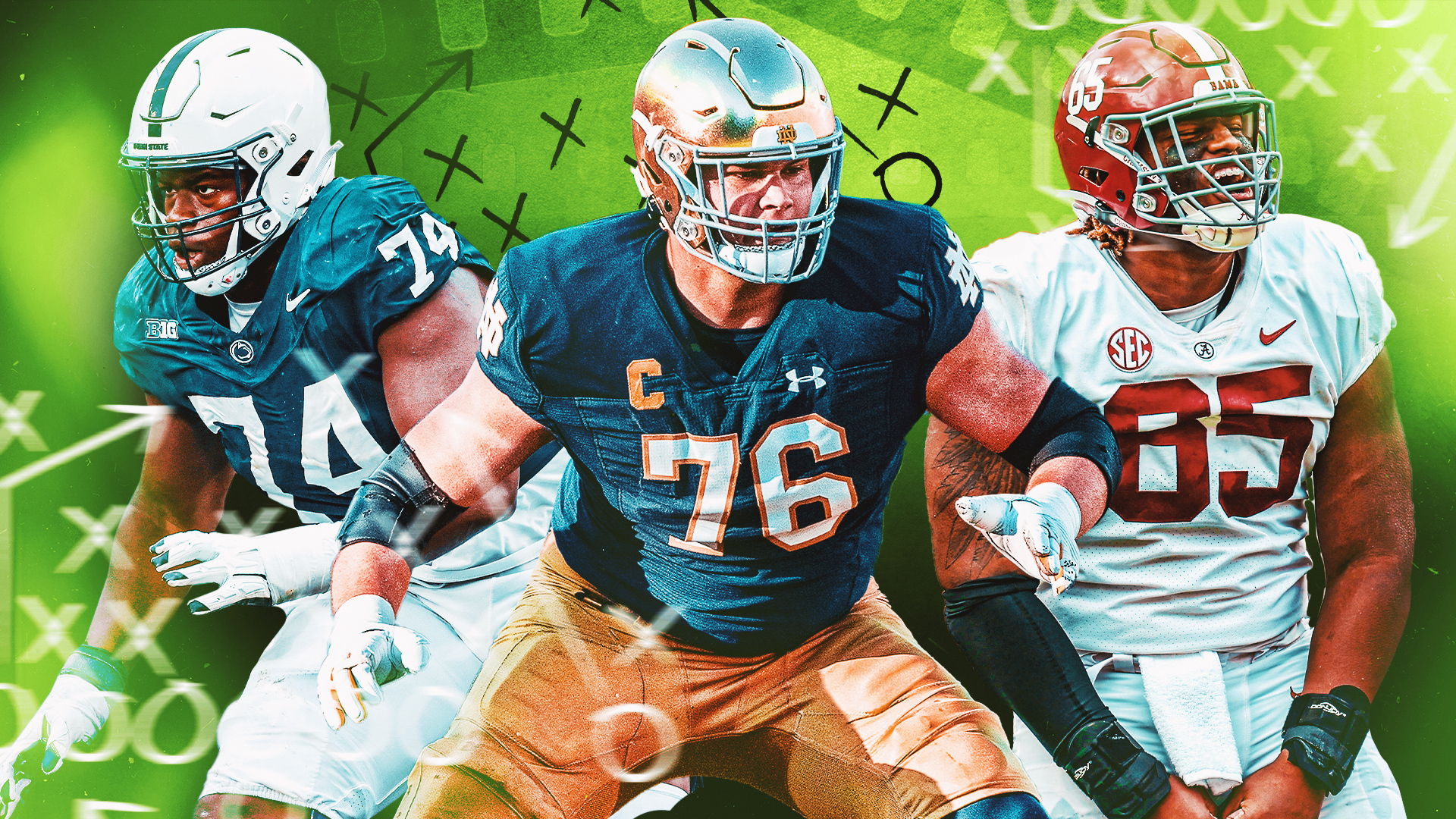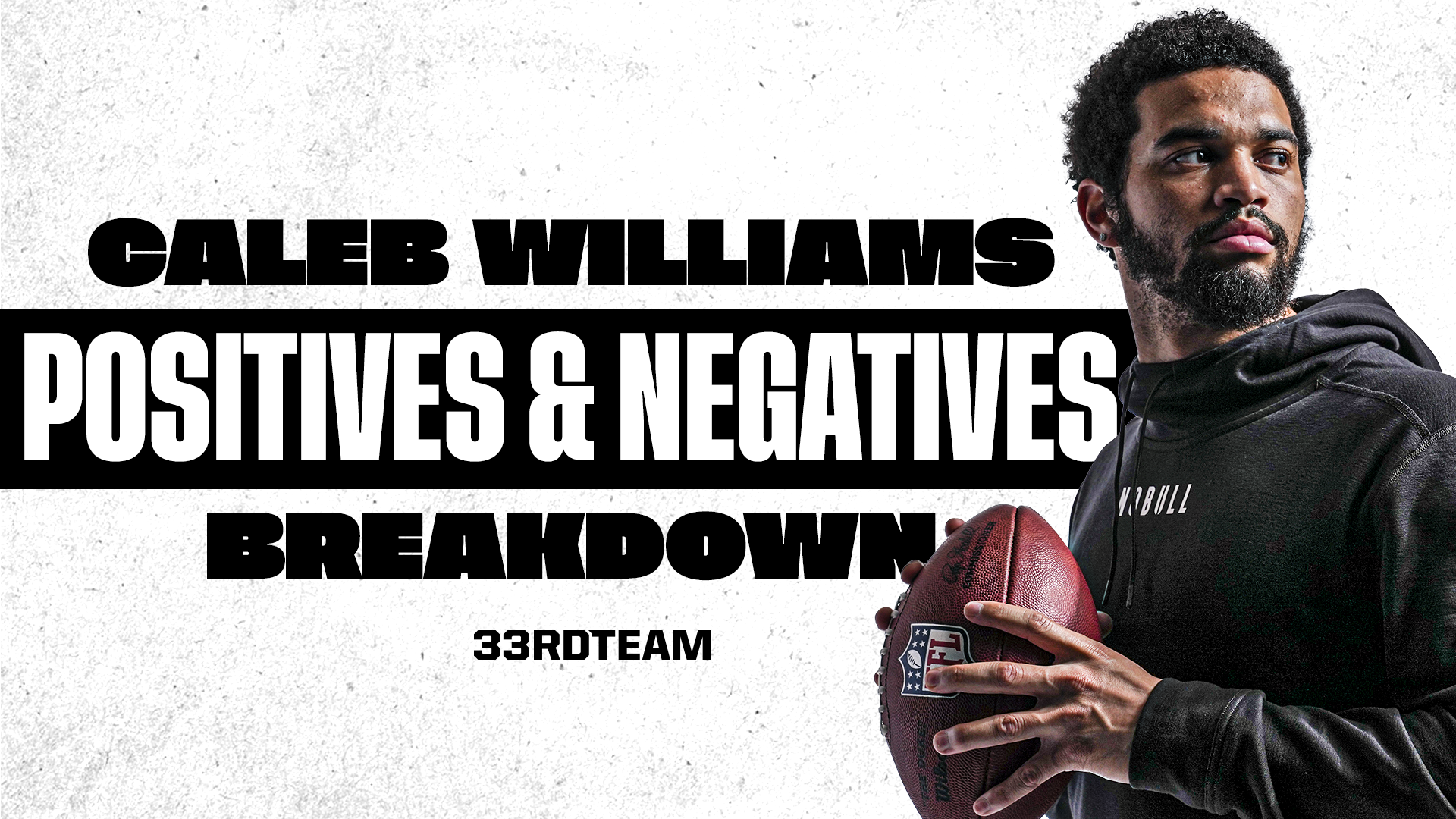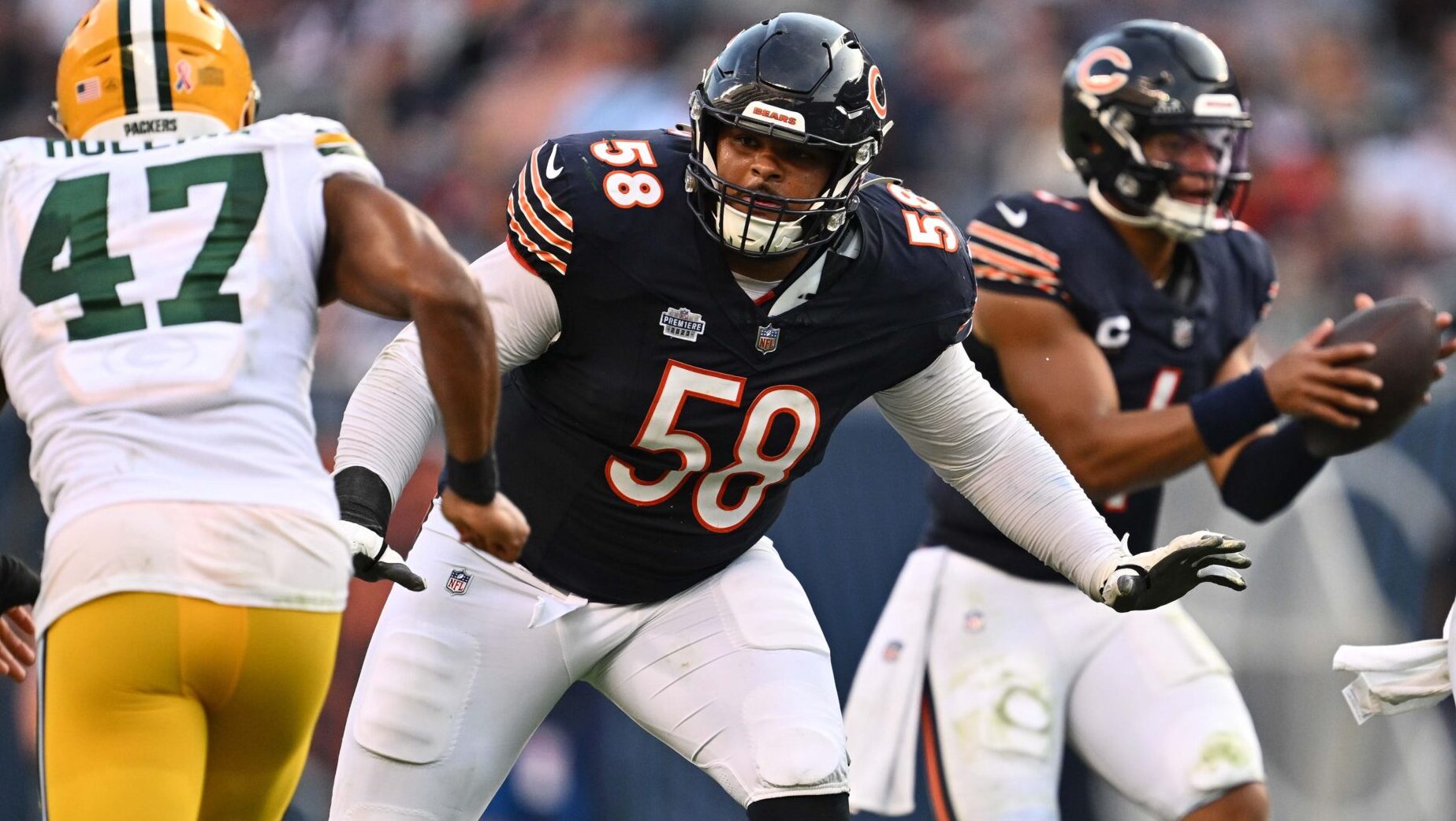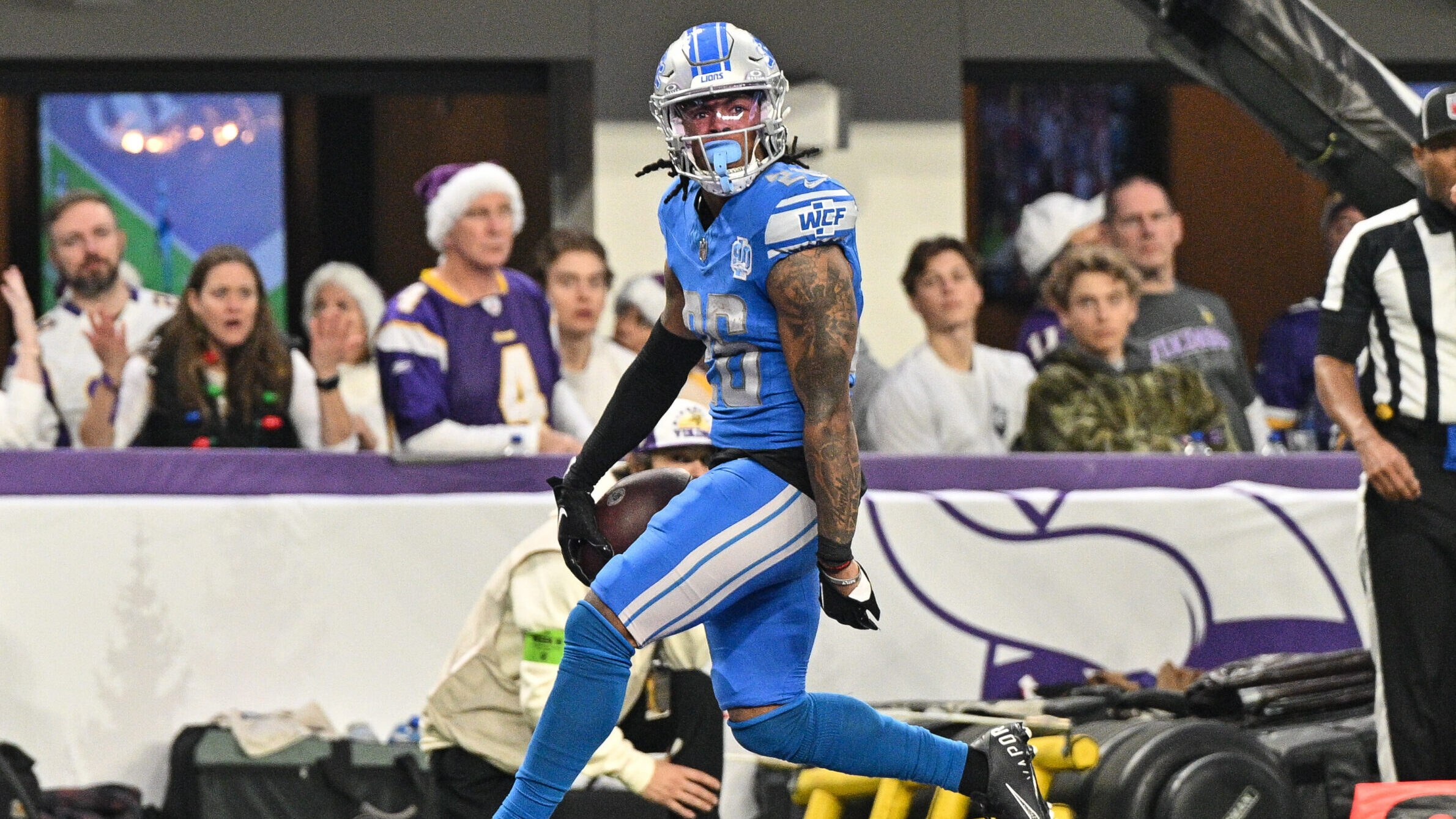Analysis
11/19/21
7 min read
49ers and Colts Show How to Win on the Ground in a Passing League
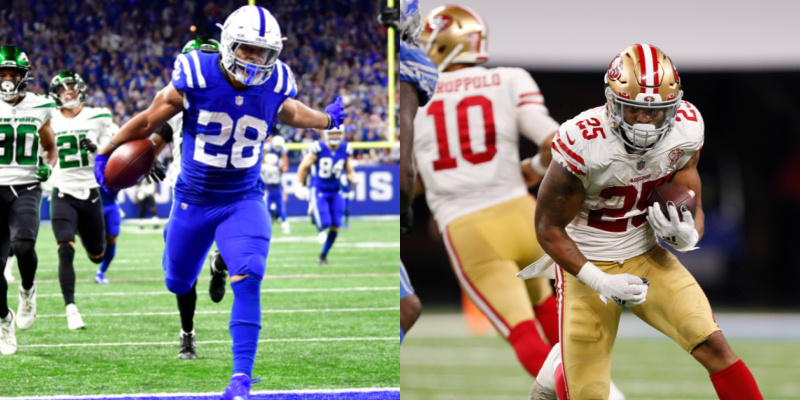
In an era where most believe that the passing game is the road to Eden and the running game is a bad detour, I have become intrigued by the offenses of the San Francisco 49ers and Indianapolis Colts. Both teams’ offensive foundation is the running game, and each team needs to be able to run the ball with efficiency for their offense to be effective.
The 49ers have built a successful rushing attack led by rookie running back Elijah Mitchell featuring an outside zone scheme while the Colts are powered more by an inside zone scheme led by second year running back Jonathan Taylor.
The 49ers run game is one of the most entertaining to watch and study on tape every week. Their basic philosophy is to attack the edge until it is taken away by the defense. Then they teach their backs to work back inside one gap at a time. If the defense does not take away the edge, the 49ers will work the perimeter all game long. We saw them do that effectively versus the Chicago Bears a few weeks ago.
The corollary to their outside zone run game is the gap scheme run game, and you will see the 49ers run that when the defense widens the defensive end or on the ball linebacker to take away the edge. Then what you get is more space between the defensive end/linebacker and 3 technique DT or 4 technique DE and that creates a natural gap for play side double teams, kick out blocks, lead blocks and wrap blocks that are the foundation of the power and counter run games.
When you study the 49ers run game, you get a feel for how difficult it is tough to prepare for. And they do it old school with their personnel groupings, predominantly playing out of 21 personnel with fullback Kyle Juszczyk and 12 personnel with two tight ends, which includes one of the best blockers in the NFL in George Kittle.
The 49ers run game is founded on different formations, multiple shifts and motions, and multiple ways in which they run their base concepts. Juszczyk may be listed as a fullback, but he lines up all over the formation including detached.
Let’s get to the 49ers' use of motion. No team in the NFL uses motion in the run game as much as San Francisco. In fact, they lead the league in rushing attempts off motion in 2021. When defenses line up and defenders are assigned to run support responsibilities, offensive motion forces changes in run support assignments.
The more the offense moves before the snap, the more the defense must communicate, which then puts pressure on their calls and their checks. The result is that defensive coordinators tend to tighten up their play calls when playing teams that motion a lot, so increased offensive motion makes a defense more predictable to attack from a tendency standpoint.
The best way to say that is that motion tends to regulate the defense. Fullback Kyle Juszczyk and wide receiver Deebo Samuel are often used as motion players in the backfield; Samuel has the second most carries of any wide receiver this season, and we saw how effective that was last week against the Rams.
In the Week 8 game against the Chicago Bears, San Francisco had the ball up 30-22 with a few minutes left in the fourth quarter. Looking to put the game away, rookie running back Elijah Mitchell ran for 39 yards to put the 49ers in field goal position. San Francisco came out in 21 personnel with Jusczyk jet motion across the formation. The run was an outside zone toss and featured outstanding blocking on the play side.
Two plays later, Mitchell would run for 12 yards on a second-and-11 and help the 49ers open up a two-score lead that sealed the win. A sixth- round rookie out of Louisiana, where he was featured in a similar zone scheme, Mitchell has shown excellent downhill burst and explosiveness as he fits the profile of a one cut zone runner who can be successful in this running scheme.
In Week 10, the 49ers recorded an impressive blowout victory against the Los Angeles Rams as they rushed 44 times for 156 yards and a touchdown. Quarterback Jimmy Garoppolo had just 19 passing attempts with 18 of them out of shotgun. Despite running the ball with volume and efficiency, the 49ers eschewed a conventional play action pass game with Garoppolo under center. Garoppolo was effective as a drop back passer completing 14 of his 18 shotgun attempts for 176 yards and two touchdowns.
San Francisco’s initial game plan was to attack the left side of the Rams defense with outside zone toss, featuring it out of 11 personnel with jet motion to the play side and out of 21 personnel with Jusczyk as the lead blocker. The 49ers leaned on their principle of attacking the edges of the defense in the run game against the Rams. Their first three snaps of the game were runs out of 11 personnel that featured jet motion, as San Francisco featured multiple personnel and formation looks on their first possession. The 49ers first possession was an 18 play, 93-yard touchdown drive that featured multiple run game and blocking concepts.
Samuel was used as a runner three times on this drive, both as an I-back and offset in the shotgun. Two of the runs were outside zone concepts with jet motion to the play side and the third run was an inside downhill run. The Rams were consistently handled physically in the run game which prevented them from getting into any of their attacking pressure looks that predominantly come out of dime personnel. It was a brilliant scheme executed at a high level.
The Indianapolis Colts feature a different running philosophy that is predicated on inside zone and gap scheme runs. Taylor is a dynamic back who I evaluated coming out of Wisconsin as the best runner in a deep 2020 draft class that included D’Andre Swift, J.K. Dobbins, Clyde Edwards-Helaire, Cam Akers and Antonio Gibson. In a detailed study of his college tape, I saw Taylor’s excellent vision, short area quickness, lateral quickness and explosive burst — all traits that have transitioned well to the NFL.
The Colts have featured Taylor and fellow running back Nyheim Hines on the field together in a Pony package. This personnel grouping has been effective in the run game and allows Indianapolis to manufacture mismatches. On Thursday Night Football against the Jets in Week 9, Taylor had four runs out of the Pony package against New York. He ran for 110 yards, including a 78-yard touchdown, as part of a 200 scrimmage yard and two touchdown effort.
Taylor’s great vision and change of direction were on full display in Week 10 against the Jacksonville Jaguars as he racked up 116 yards and a touchdown on 21 carries. He ran for 34 yards on the first play of the game on a mid-zone out of an I-back alignment against Jacksonville’s 4-2 front. Taylor managed to run away from the safety dropping down into the box and generate an explosive run.
On Indianapolis’ next possession, Taylor ripped off a 20 yard run on second-and-five. With the Colts in 11 personnel and wide receiver Zach Pascal jet motioning from the field to the boundary, the Jaguars were in nickel and bumped gaps in response to the motion. Taylor ran mid-zone from an I-back alignment and showed his cutback ability. The bottom line is that Taylor fits the Colts predominant inside and mid-zone running scheme perfectly, and he has no weaknesses to his game as a runner.
As someone who spends countless hours studying tape, I find the running games of the Colts and the 49ers fascinating in different ways. There is no question that that is what drives both offenses, featuring some similarities schematically but many notable differences. In a league where explosive passing attacks are constantly presented as the only way to play through January into February, I am continually struck by both the commitment and the quality of both teams’ running games.
Aadit Mehta contributed to this story


